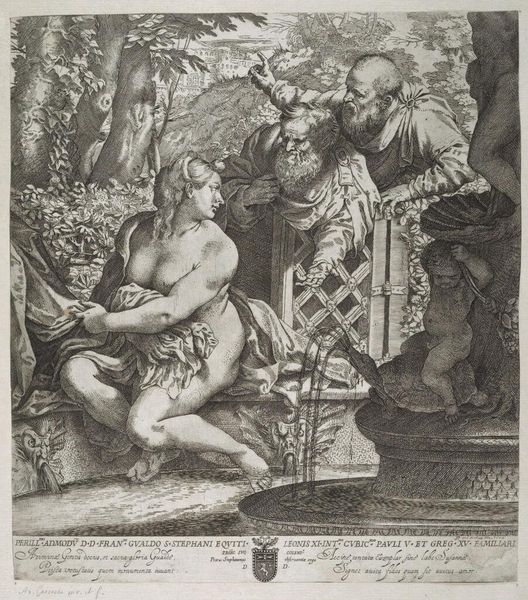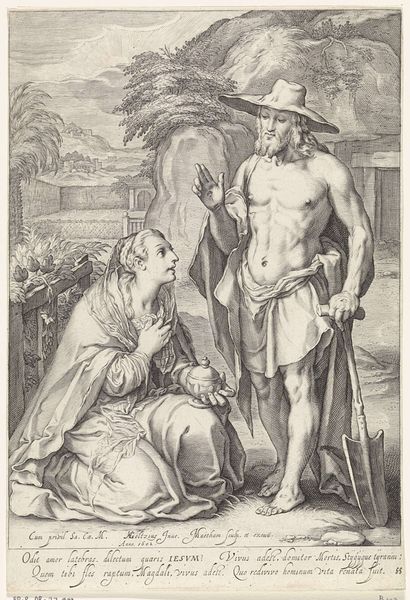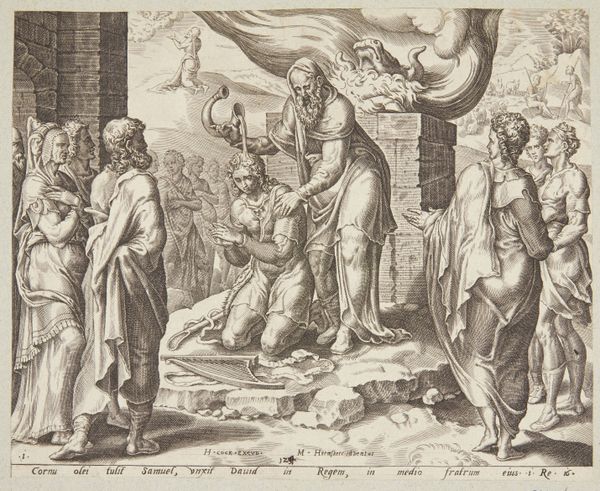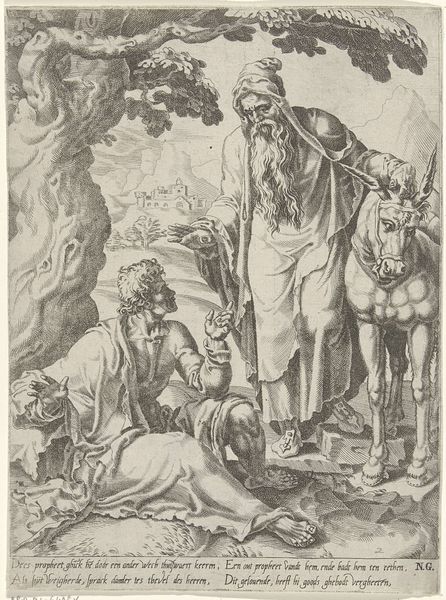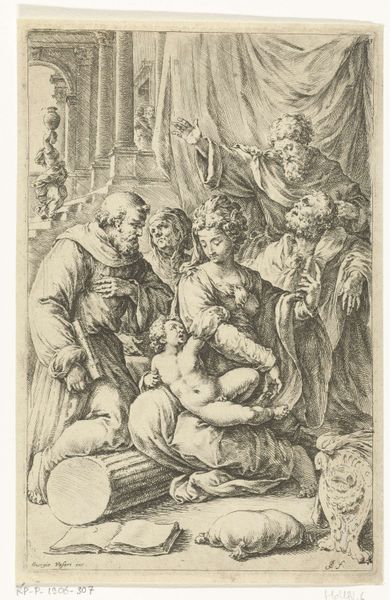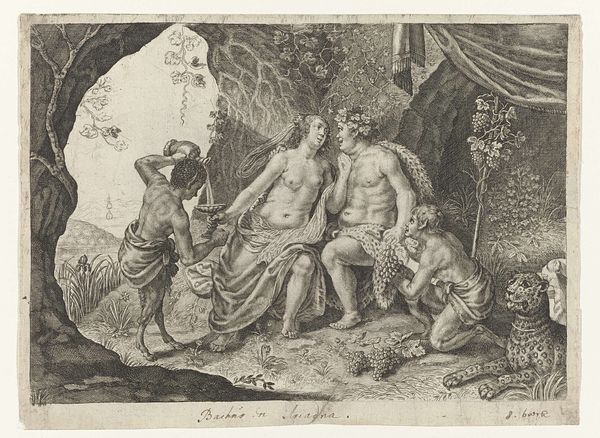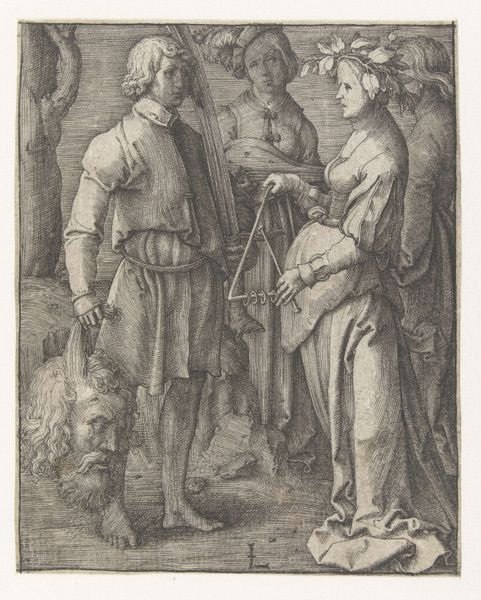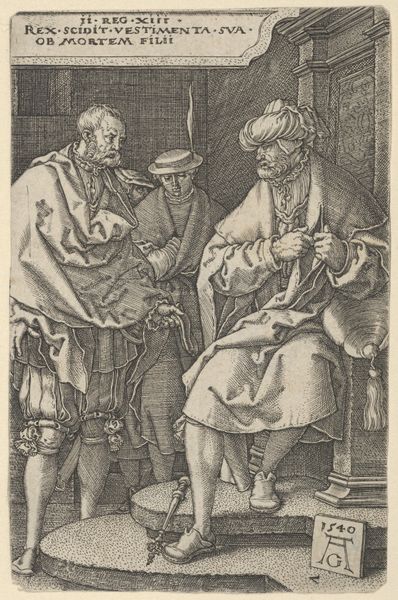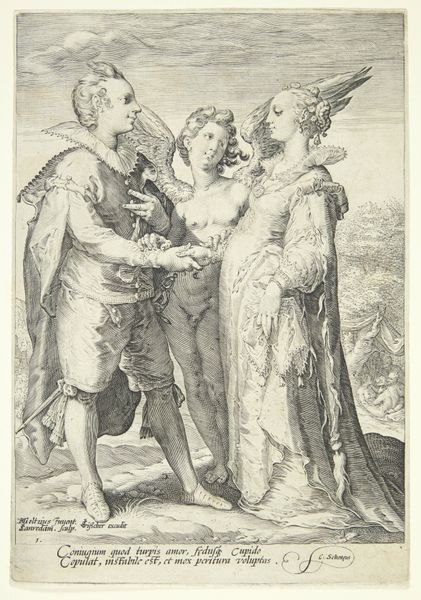
drawing, print, etching, paper, engraving
#
drawing
#
narrative-art
# print
#
etching
#
mannerism
#
figuration
#
paper
#
history-painting
#
italian-renaissance
#
nude
#
italy
#
engraving
Dimensions: 324 × 314 mm (image/sheet; cut within plate)
Copyright: Public Domain
Curator: So, here we have Annibale Carracci's "Susanna and the Elders," made between 1590 and 1595, an etching and engraving on paper. Editor: The contrast is intense, really highlighting Susanna's vulnerability. What do you see in this piece, beyond the surface narrative? Curator: I see a potent intersection of power, gender, and voyeurism. Consider the historical context: Susanna’s story, part of the Book of Daniel, positions her as virtuous but also as a passive object of male gaze and judgement. How does Carracci’s depiction reinforce or challenge that? Editor: It seems pretty straightforward in showing the leering elders, right? They look menacing. Curator: Yes, but note Susanna’s body language. Is she simply a victim, or is there a hint of resistance, perhaps defiance, in her posture? How might feminist theory inform our reading of this scene? It speaks volumes about how women’s bodies are historically sites of control and scrutiny. Editor: I see what you mean. Her gaze is averted, but she's not completely cowering. The image really freezes her at this one point in time, like her whole worth comes down to it. Is it too much of a stretch to connect that with current issues of consent and objectification? Curator: Absolutely not. That connection is vital. Carracci’s work becomes a lens through which we can examine the continuity of patriarchal structures across centuries. What is our role as viewers in perpetuating, or challenging, the gaze? Editor: This makes me see beyond the pretty fountain and garden to how images like this can really affect culture. It's not just an old story; it is still alive in how we think about these issues today. Curator: Precisely. And by interrogating these representations, we can hopefully move towards a more equitable way of seeing and being.
Comments
No comments
Be the first to comment and join the conversation on the ultimate creative platform.
